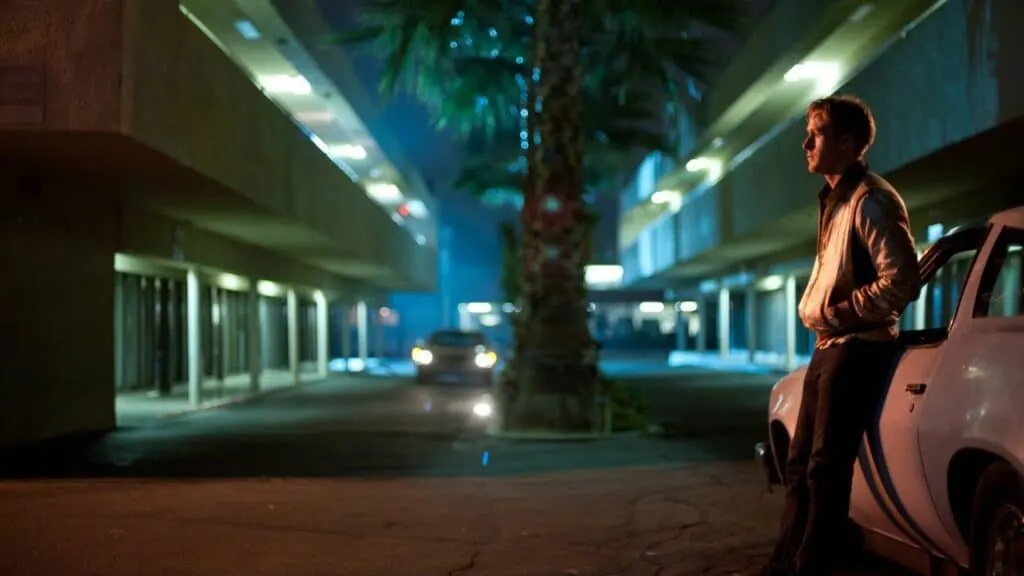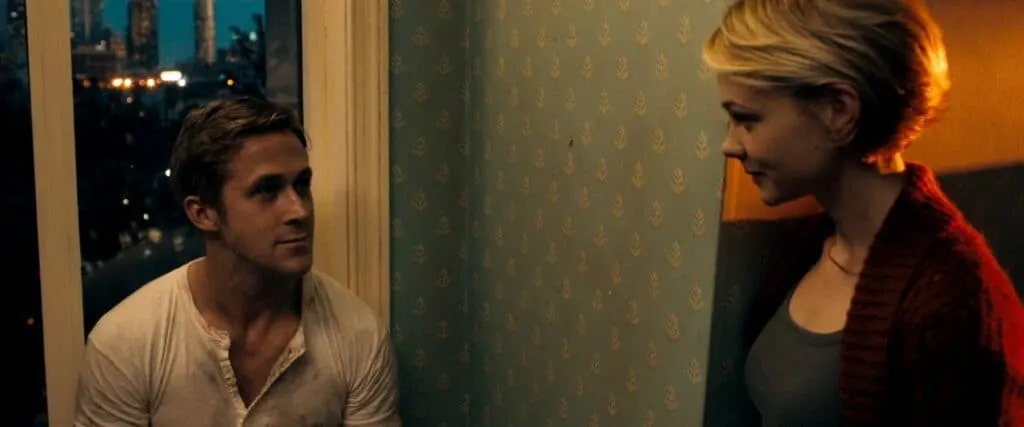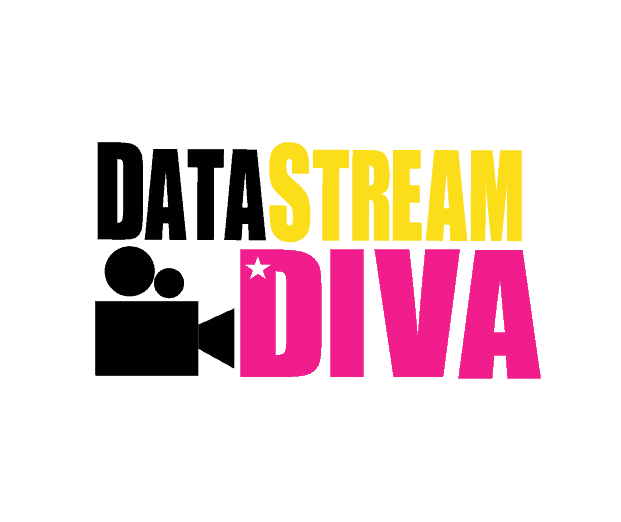- Beyond the Aquila Rift Explained: What The Ending Really Means - April 4, 2022
- Best Movies Like Paper Towns: Our Top Recommendations - April 4, 2022
- Best Movies Like Moana: Must-See for Disney Fans - March 4, 2022

A Lynchian descended aesthetic in its static delirium of saturated colors, and hieratic faces reach expressive psychological scrutiny. We are talking about Drive, and along with its analysis, we will bring you our best recommendations that drive into the sunset and our beloved film.
Nicolas Winding Refn‘s Drive was one of the most celebrated films of 2011. The critics at the time surrendered to this American-made film that told the story of a mechanic (Ryan Gosling) with a real gift for driving who combined his day job in the garage with night jobs of extreme driving in the service of small-time crooks.
However, its synopsis’s more or less conventional nature does not reflect what is striking and unmistakable about Drive. This lies not so much in the course of its plot, but instead in Winding Refn’s way of “writing,” that is, his very particular aesthetics and production design, which result in a visually beautiful film.
Movies Like Drive – A Work of Aesthetic Art
A Tiny Touch Lost in Recent Cinema
An appealing result that, nevertheless, powerfully harkens back to aesthetics already well established by other essential filmmakers. Perhaps the most decisive influence for Drive is that of films by David Lynch, among which films such as Lost Highway or Mullholland Drive stand out. Drive shares with them very clearly localized elements: a saturated chromatic code, with intense and bright colors that enhance the irresistible of its scenarios; the eminently nocturnal character of its story, as well as the very deliberate use of light that ends up filled with many meanings. In Drive, as in Lost Highway, the colors shine with particular violence on the night canvas, making light the real protagonist of the aesthetics and its colors a metaphor for the time that passes with each shot. It seems improbable that if Drive had not been conceived with these colors and this aesthetic, it would have obtained such recognition from the critics.
The exciting thing about this aesthetic is that it merges with a form of direction that, despite being conscious of the formal result, one that is undoubtedly considered here as the crucial heritage of the whole proposal, does not hide its will to delve into the spirit of the characters and try to sublimate psychologically internal notions buried behind fundamentally hieratic faces. And this is one of the characteristics that also define Drive through what we could call the “artistic direction”: a static direction of still and photographically impenetrable faces, which nevertheless, perhaps due to the effect of this inquiring reflection that seems to address the very Manichean aesthetics of the story, seem to sublimate directly to the viewer their concerns or worries without any form of gestural interpretation.
It is true; Drive moves away from the more cryptic filmmakers like Lynch or Kieslowski, whose films require mobilizing a much greater imagination and sensitivity. Drive is a film with static shots that delve into the fixed faces of its characters. However, it still has a distinctly narrative character, and its decoding is as simple as that of any other paradigmatically American film that corresponds to the noir genre. Perhaps that is why it makes its way with kindness among a large number of audiences, both those closer to the noir genre and those more interested in the audiovisual display of its forms.
A Detail No One Forgets
Why the Music Reaches the Audience So Deeply

In this movie, the audience is always talking about the soundtrack. That’s more than just a fact. Drive’s musical choices show a clear will to contribute from the music elements not precisely present in the images. And with these choices, a now-historic tandem is forged between this kind of visual aesthetics of saturated tones and static shots, with powerfully meaningful music. This is the case of Wong Kar Wai‘s films, where, beyond his (historical) successes in music choice, what must be affirmed is that they are brave and daring.
The Protagonist’s Unattainable Desire
An Esteemed Interpretation Effort
Interestingly, however, the script’s symbolic work does not hesitate to give Ryan Gosling’s character a meaning beyond the immediate. While also working as a film stuntman driving vehicles in action and accident scenes, our main character, while doing so wearing masks to resemble the actor he replaces, constructs his identity in reality as a vector in the direction of another is the real actor. Therefore, his identity’s condition is built by leaning on that of another who is the one who sustains the crucial identity. This condition of his identity has a parallel in his relationship with Irene (Carey Mulligan), his neighbor. Because when he relates to her and her son, Benicio (Kaden Leos), he acts as if he were the real actor in “that other movie,” Irene’s marriage to a convict about to be released from prison. In the same way that, as a movie stuntman, he will never, ever become the actor who supports the main character, our driver experiences enormous difficulties in impersonating the real husband and inhabiting Benicio’s status as real spouse and father.
It seems that the fate of our driver is to articulate everything necessary, in the form of heroism, so that the real character, fully legitimized in his own story (be it the real protagonist of the action movie or Irene’s husband), can continue to support his own story. Still, let us consider that our driver, as a film specialist, risks his life so that the film’s real protagonist can display in fiction the skills that make him the absolute protagonist. At the same time, in his relationship with Irene, he notices the existence of a certain asymptote, that is, an impassable imaginary line that prevents him from entirely supplanting the real husband.

Our driver will gradually realize that if in his work as a specialist he risks his life, he also risks his life in his work as “Irene’s specialist,” that is to say, in the impersonation of the husband who provides Irene with a livelihood. If we add the element of the character’s loneliness, one that is readily appreciated while viewing the film, traces of a specific heroic paradigm appear.
All in all, Drive’s a very appealingly shaped film with a purely noir genre story. A sparse but well-articulated backstory and irresistible music and colors. We do not know if Drive was the biggest film of 2011. Still, it inaugurated a particular version of an essential aesthetic that usually dazzles the eye and, in this case, transcends the hieratic faces to reach a great empathy.
Movies Like Drive – Our List
Do you want to know or see more movies like Drive? Then you’re in the right place. We have precisely the movies below that best match Drive. Thus, allowing you the pleasure of sitting behind the wheel again and enjoying the sleepless nights.
Nightcrawler
Sleepless in Nocturnal Tension
Nightcrawler was nominated for best screenplay at the Oscars, where it fought among people like Wes Anderson, Alejandro González Iñárritu, or Richard Linklater. True legends of the golden statuette. But it is no exaggeration to observe that the Hollywood Academy has once again committed one of its everlasting mistakes by leaving Dan Gilroy‘s debut feature film without more nominations and awards than the aforementioned.
Nightcrawler is part of the typical lists of the best of critics, informers, and moviegoers, who between onanistic climaxes, happy with themselves, will sentence that Dan Gilroy’s film is one of the best released in our theaters during the wonderful cinematic year of 2015. For the undersigned, the film starring a portentous Jake Gyllenhaal. Who’s masterfully descended into the hells of ambition and a kick to the current journalism.
Nightcrawler begins with a night shot in a Los Angeles street where we can see a completely blank advertising banner, waiting for its advertiser, so that all the eyes of passers-by end up on it. A declaration of intentions on the part of the writer/director, who, knowing the material he has in his hands, knows very well what to talk about, and how to express it in images. Because Gilroy’s text, daring and hurtful at times, with a very triumphant dramatic crescendo, is supported by an inspired mise-en-scène.
The Place Beyond the Pines
Another Nail Biter with Ryan Gosling
The Place Beyond the Pines tells us how a mysterious and lonely fairground motorcycle racer, Ryan Gosling, struggles to provide for his family, and to do so; he starts robbing banks. A cop crosses his path, and their encounter will change and influence their lives. As he did in Blue Valentine, Derek Cianfrance returns to tell us a story that, this time, lasts 15 years. A subtly heartbreaking tale that unravels the American dream questions the hero’s status and proves that the past will always be with us.
No one can imagine how The Place Beyond the Pines ends after the first 20 minutes of footage, something totally different yet so strongly connected. A fact that could be a very negative aspect of the film for not knowing how to make fair use of it, but on the contrary, it is one of its strong points. Derek Cianfrance‘s film tells three stories of four characters whose paths cross and whose lives influence each other to unsuspected facts. That is why, to understand this strong influence and this ironic decision making, Cianfrance divides the film into three parts as differentiated as they are necessary to understand this hopeful ending. Three parts that would take forever if it were not for the subtlety with which the plots advance and the main and not so main characters develop, who end up being almost as relevant and influential in the story as the protagonists.
This ‘crossroads’ is just an excuse to delve into the myth of the American dream and how they build, or instead deconstruct, that American cinema tries to sell us as the hero’s figure. On the one hand, the anti-hero, the traveling carnival motorist, leaves his job to rob banks to support his son. An activity that becomes violent and desperate and the desire of this character to become a good man to achieve the American dream. On the other hand, the cop who is almost a nerd and is placed on the podium of heroes for stopping others’ feet, but who will soon take advantage of this status to gain notoriety and power. Two sides of the same coin on which Cianfrance is not afraid to delve and transmit to us, almost without realizing it, the harsh reality and the extremes to which the ‘ideal society’ makes us reach.
Collateral
A Duet of Nocturnal Confrontations
Next on our list of Movies Like Drive is the story of a hired assassin, in charge of eliminating witnesses in a critical case, who rents the services of a cab driver for one night to accompany him on his mission. Collateral is full of details that go beyond its simple plot premise, which, at first glance, does not seem to give much away. But Collateral surprises for many and diverse factors. For starters, we have a Tom Cruise devoted to his character, playing the villain for the first time in his career and leaving aside his deified character, which seems that the actor fervently needs to be in the spotlight at all times. However, in Michael Mann‘s work, I imagine because of an excellent directing job, the handsome Cruise forgets that he is Cruise and gives us a portentous interpretation of Vincent. Jamie Foxx is in charge of providing the famous actor’s replica, and the result is a continuous tour de force.
And it is in the relationship between the two characters, who represent, once again, the eternal struggle between good and evil, where the most exciting points of the story are found. A confrontation that goes beyond who are the people Vincent has to eliminate, that at a certain point, the story reveals some surprises in this regard. Max (Foxx) is a cab driver who dreams of opening a limousine business specializing in select clients, a dream he knows he will never realize.
Vincent, in a display of psychology, throws that very thing in his face. And here is one of the most striking and original elements of this confrontation: while Vincent, aware of the blows that life gives you, has gone over to the other side, Max continues to cling to a utopia. Both are losers and winners at the same time. Vincent can have everything he wants, even though he has to commit illegal acts to do so, and Max has to be a full-time cab driver while remaining true to his principles. His nocturnal encounter with Vincent will take him down to hell itself in a city that will open up a new world he never knew before.
Baby Driver
Drive’s Young & Wild Musical Brother
With the soul of a musical from beginning to end, the English director’s crazy idea for Baby Driver is that its almost two-hour duration is a quasi-perpetual choreography. Everything, absolutely everything, moves to the beat of the music.
This effort is exemplary in certain moments when there is no action or chases involved. Attention to the sequence shot that follows Ansel Elgort‘s character after the first energetic scene of the film becomes lesson after lesson on how to distill adrenaline in moving images. Edgar Wright‘s script decides that’s enough of dialogue and that it is time to leave the audience with their hearts racing.
Be warned, the transitional moments that lead from one to the other of the four set-pieces that make up the film could not be better measured in every way -and I’ll spare me from criticizing the lines that cross all the characters and the splendid path Wright defines them-, and the balance with the areas of greater narrative impetus is as precise as to how they come together to make Baby Driver one of the best proposals of 2017.
Movies Like Drive – Brief Summary
Drive is not alone in its road of night movies, but its essence was built and released throughout cinema’s history in the last twenty years. The truth is that few films manage to live up to Drive’s subtle touches.
And while not everyone may love the film as much as we do – and you, most certainly – the film had its impact. That’s why we wanted to bring you four similar movies that are the perfect Drive co-pilots when you need them most.
What we can personally advise you to start with is The Place Beyond the Pines, as Ryan Gosling manages to entice you once again into another adventure of society’s outcasts. Another option is to continue with Nightcrawler, feel the night’s misfortunes, or Baby Driver to handle the horsepower behind music engines.
FAQ
Drive is currently available on Amazon Prime Video.
Ryan Gosling wears a custom Patek Philippe in Drive.
The budget of the film was 16 million USD.
The screenplay, written by Hossein Amini, is based on James Sallis’s 2005 novel.
The movie did 81.4 million USD.
Further read:
